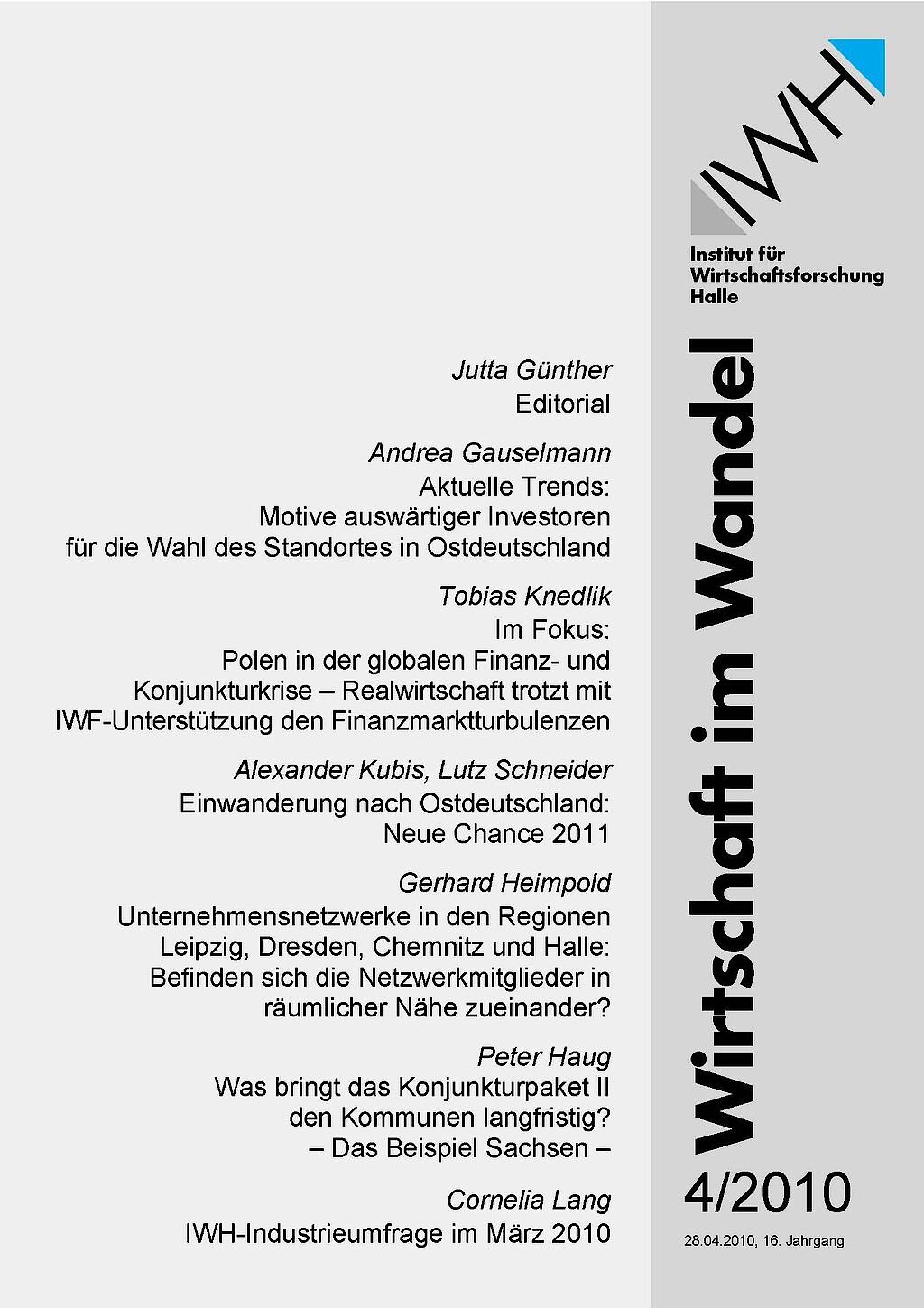Immigration to East Germany: Last chance 2011
Alexander Kubis
Lutz Schneider
in: Wirtschaft im Wandel,
No. 4,
2010
Abstract
Deutschland – insbesondere Ostdeutschland – erfährt mit der Alterung und Schrumpfung der Bevölkerung eine demographische Konstellation, welche Gesellschaft und Ökonomie vor erhebliche Herausforderungen stellen wird. Eine Option, den demographiebedingten Problemdruck zu senken, stellt die Stimulation von Zu- bzw. Einwanderung dar. Der Beitrag beleuchtet in historischer Betrachtung
zunächst die Geschichte der Außenwanderung Deutschlands im 20. Jahrhundert und kommt zu dem Schluss, dass von echter Einwanderung erst seit den 1950er Jahren mit Blick auf die Zuwanderung von „Gastarbeitern“, welche in der Folge zu Immigranten wurden, in die BRD gesprochen werden kann. Die ostdeutschen Regionen hingegen weisen einen sehr geringen Anteil von Einwanderern auf, da die DDR Zuwanderung in deutlich geringerem Umfang und in der Regel mit nur temporärem Aufenthaltsstatus zuließ. In der gegenwärtigen Situation, da die Zuwanderung nach (Gesamt-)Deutschland ohnehin eher rückläufig ist, spricht die vergleichsweise geringe Einwanderungserfahrung und die damit verbundene
geringe Netzwerkdichte ausländischer Bevölkerungsgruppen in den ostdeutschen Ländern für eher beschränkte Erfolgsaussichten hinsichtlich einer Stimulation
zusätzlicher Zuwanderungspotenziale. Das einzig greifbare Mittel zur Erhöhung der Zuwanderung in die Neuen Länder stellt die Migration aus Mittelosteuropa dar. Die räumliche Nähe zum Herkunftsgebiet könnte bestehende Attraktivitätshemmnisse
der östlichen Bundesländer kompensieren helfen und einen signifikanten Zuwanderungsstrom über die Grenzregionen hinaus in Gang setzen. Indes ist vor zu hohen Erwartungen mit Blick auf die Größenordnung des Zuwanderungsstromes zu warnen. Ein Großteil der migrationsaffinen Bevölkerung
Mittelosteuropas ist im Zuge der rascheren Implementation der Arbeitnehmerfreizügigkeit in anderen EU-Staaten bereits ausgewandert. Die
Anstrengungen müssen nun darauf gerichtet sein, die ab Mai 2011 in den Arbeitsmarkt drängenden Zu- und Einwanderer aus den östlichen Nachbarländern
nicht durch neuerliche Restriktionen abzuschrecken.
read publication





